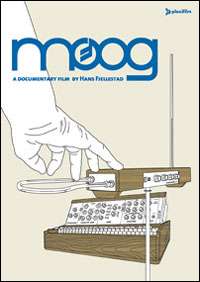Please tell us which country and city you'd like to see the weather in.

Hard (Zürich)
Hard is a quarter in the district 4 of Zürich.
It was formerly a part of Aussersihl municipality, which was incorporated into Zürich in 1893.
The quarter has a population of 12,715 distributed on an area of 1.46 km².
Coordinates: 47°22′46.59″N 8°30′57.64″E / 47.3796083°N 8.5160111°E / 47.3796083; 8.5160111
Hard (surname)
Hard is a surname. Notable people with the surname include:

Hardcourt
A hardcourt (or hard court) is a surface or floor on which a sport is played, most usually in reference to tennis courts. They are typically made of rigid materials such as asphalt or concrete, and covered with acrylic material to seal the surface and mark the playing lines, while providing some cushioning. Historically, hardwood surfaces were also in use in indoor settings, similar to an indoor basketball court, but these are now rare.
Tennis
Tennis hard courts are made of synthetic/acrylic layers on top of a concrete or asphalt foundation and can vary in color. These courts tend to play medium-fast to fast because there is little energy absorption by the court, like in grass courts. The ball tends to bounce high and players are able to apply many types of spin during play. Flat balls are favored on hard courts because of the extremely quick play style. Speed of rebound after tennis balls bounce on hard courts is determined by how much sand is in the synthetic/acrylic layer placed on top of the asphalt foundation. More sand will result in a slower bounce due to more friction.
Moog
Moog may refer to:
- Robert Moog, inventor of the Moog synthesizer
- Moog synthesizer, sound-generating electronics invented by Robert Moog
- Moog (film), a 2004 biographical film about Robert Moog
- Moog Music, a synthesizer maker founded by Robert Moog
- Willy Moog, philosopher
- Moog synthesizer, sound-generating electronics invented by Robert Moog
- Moog (film), a 2004 biographical film about Robert Moog
- Moog Music, a synthesizer maker founded by Robert Moog

Moog (film)
Moog is a 2004 documentary film by Hans Fjellestad about electronic instrument pioneer Dr. Robert Moog. The film features scenes of Dr. Moog interacting with various musical artists who view Moog as an influential figure in the history of electronic music.
Moog is not a comprehensive history of electronic music nor does it serve as a chronological history of the development of the Moog synthesizer. There is no narration, rather the scenes feature candid conversation and interviews that serve more as a tribute to Moog than a documentary.
The film was shot on location in Hollywood, New York, Tokyo, and Asheville, North Carolina where Moog's company is based. Additional concert performances were filmed in London and San Francisco.
The film's 2004 release was designed to coincide with the fiftieth anniversary of Moog Music, Robert Moog's company that was founded as R.A. Moog Co. in 1954.
Artists who appeared in the film
Moog (code)
MOOG is an astronomical software package. It is an example of Fortran code that performs a variety of spectral line analysis and spectrum synthesis tasks under the assumption of local thermodynamic equilibrium. Moog uses a model photosphere together with a list of atomic or molecular transitions to generate an emergent spectrum by solving the equation of radiative transfer.
The typical use of MOOG is to assist in the determination of the chemical composition of a star, e.g. Sneden (1973). This paper contains also the description of the first version of the code and has been cited about 240 times as of 2008-04-24 by publications in international journals studying the abundances of chemical elements in stars.
The software package has been developed and is maintained by Christopher Sneden, University of Texas at Austin. The current supported version of the code was released in August 2010 and is described in the MOOG User's Guide (see references below). Moog is written in FORTRAN 77.
Radio Stations - Hard_(Zürich)
SEARCH FOR RADIOS
Podcasts:

